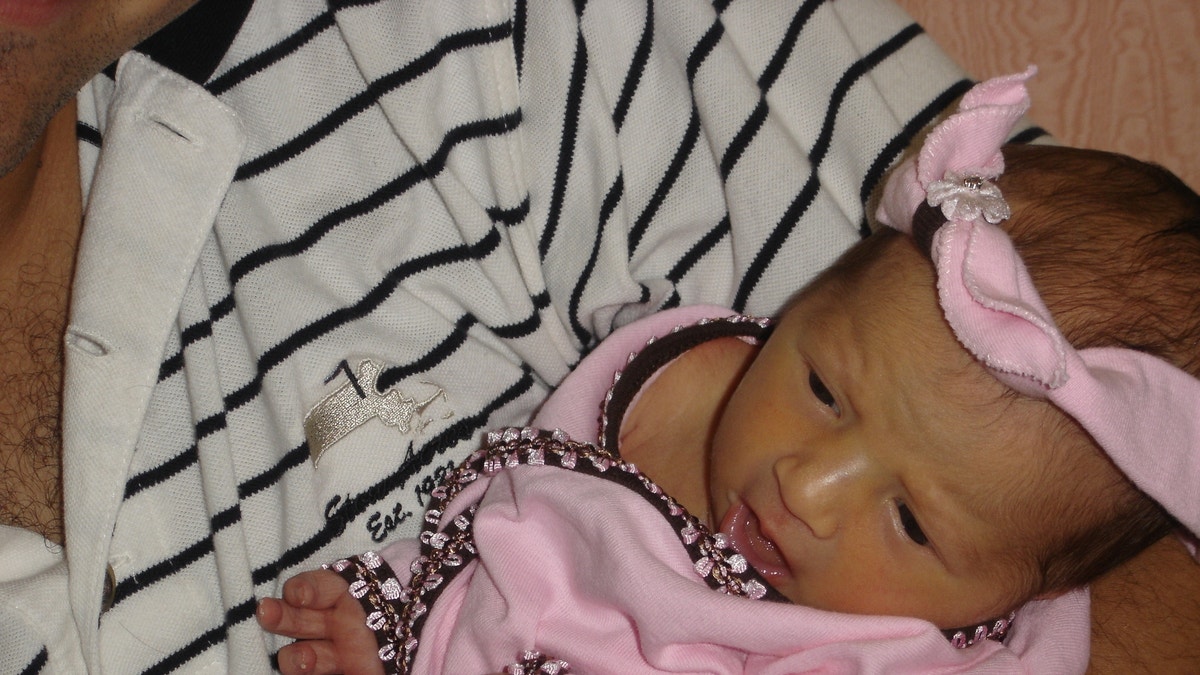
Andrew Rabinowitz holds baby Rebecca shortly after her birth. (Courtesy Phyllis Rabinowitz)
It’s every parent’s worst nightmare.
You get the all clear to bring your premature baby home from the hospital but when you start to suspect she’s very sick, you bring her to the pediatrician, then the emergency room to get answers. She’s diagnosed with the common cold, sent home and dies the next day.
This was a reality for Phyllis and Andrew Rabinowitz, who lost their daughter Rebecca, who was just 9 days old. Rebecca had slightly labored breathing, but was released from the neonatal intensive care unit after five days. But after her parents brought her home, they noticed she was wheezing, extremely lethargic and not feeding well.
Phyllis and Andrew brought Rebecca to the pediatrician and the emergency room, and both times, doctors told them she had a common cold.
The Rabinowitz’s urged doctors to admit Rebecca and run more tests, yet the ER doctor told them that she had to attend to the real emergency down the hall.
“She made us feel almost crazy and overprotective and neurotic,” Phyllis said. The next morning Rebecca woke up with difficulty breathing, so they rushed her to the hospital, where she died.
The autopsy showed that Rebecca had an enteroviral infection, something that’s common in children, but rare in babies so the symptoms can look very different.
“That’s the thing that we learned quickly about babies—babies are a whole different field of medicine,” Phyllis said. “Any symptom is different on a baby than it is on a child or an adult.”
A complicated system
Only one-third of emergency rooms have a separate pediatric unit, according to a recent report by the National Center for Health Statistics. Yet, having a separate unit doesn’t necessarily mean the care will be any better because not only is there no universal definition for what a pediatric emergency room is, but there are no laws that hospitals must abide by.
“The hard part is that really anybody can say anything, and there’s not that much accountability at this point,” said Dr. Adam Vella, director of Pediatric Emergency Medicine at Mt. Sinai Medical Center in New York City.
Pediatric emergency specialists like Vella complete three additional years of pediatric training in addition to their residency programs, in comparison to the three or four months emergency physicians complete. Yet, specialists are not available in every hospital. In fact, only about 25 percent of ERs had access to a physician with this specific training, according the Centers for Disease Control and Prevention.
“In no time in the near future are we going to have enough pediatric emergency physicians to see all these kids,” Vella said. “We need to work with the emergency physicians and other people in the ER to make sure they all feel comfortable seeing kids.”
Change is needed
In 2009, the American Academy of Pediatrics and the American College of Emergency Physicians issued a joint statement with revised guidelines for emergency departments that care for children. But despite these guidelines, only six percent of emergency departments are equipped with the proper supplies and equipment and only 59 percent of managers are aware of the guidelines, according to the CDC.
Phyllis and Andrew Rabinowitz are hoping to change that. In 2006, they started the R Baby Foundation, a non-profit organization focused on improving pediatric emergency care through education, training, research, treatment and equipment.
“Nothing my husband and I do will ever bring our daughter back, but we firmly believe we need to change the standards and the definitions for parents to be aware and for children to get the best healthcare possible in an emergency situation,” Phyllis said. In six years, R Baby Foundation has raised $5 million to fund grant programs nationwide.
What you can do
To help ensure your baby gets the best care in case of an emergency, ask your pediatrician where their practice sends patients in an emergency and not just because they’re affiliated. Find out if the hospital has pediatric emergency physicians, or a pediatrician on call, a separate pediatric emergency department, nursing staff, and a pediatric ICU. If you do find yourself in the ER and you’re not satisfied with the diagnosis, be an advocate for your child and ask for the rapid response team who can give you a second opinion.
You can also support the R Baby Foundation’s work and demand changes be made on the state and federal level by signing its petition today.
